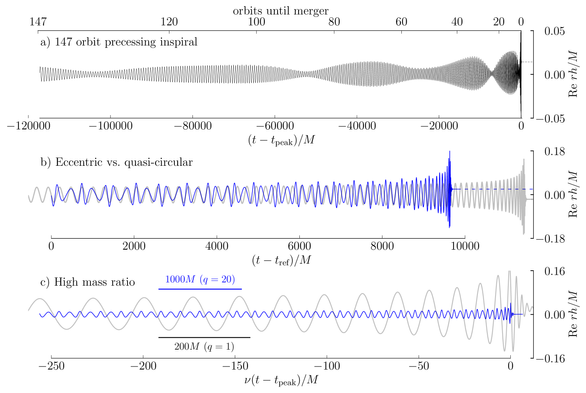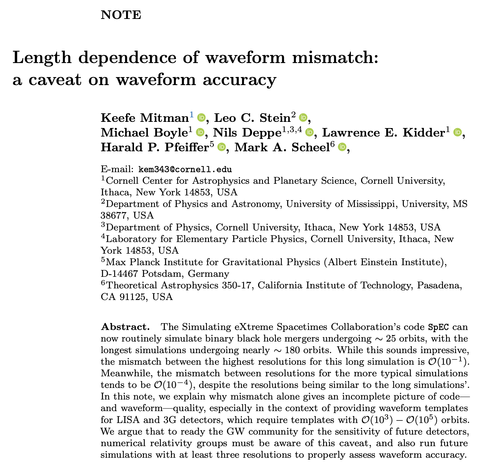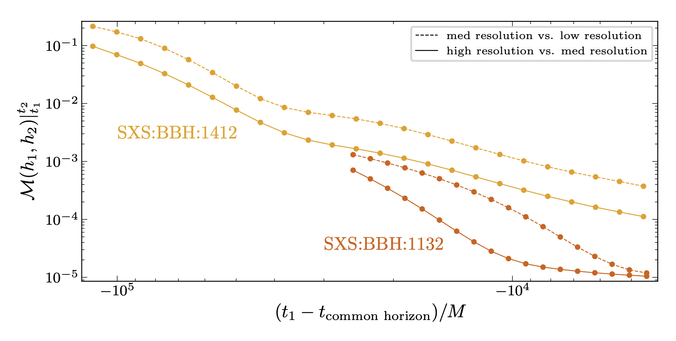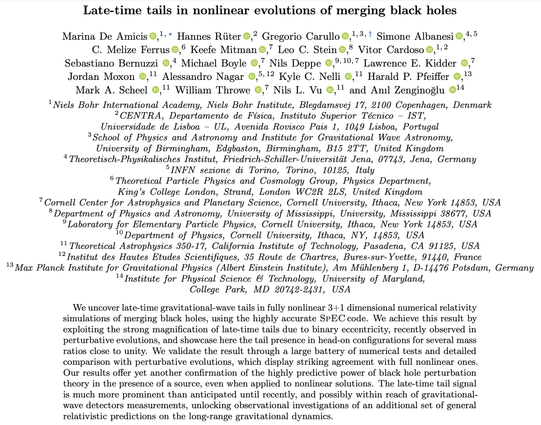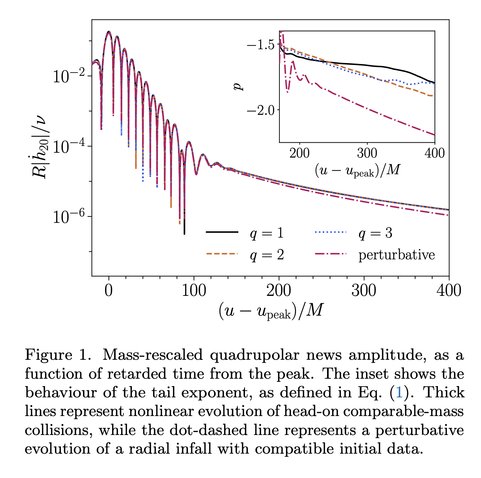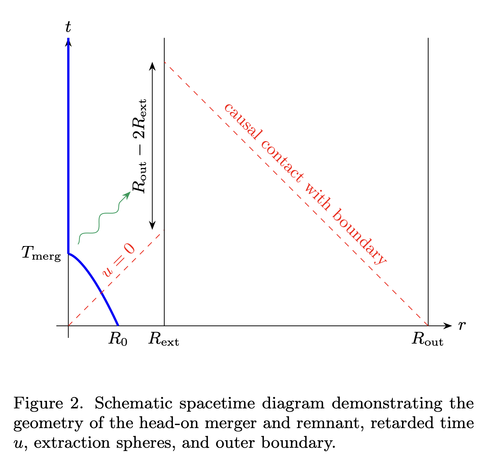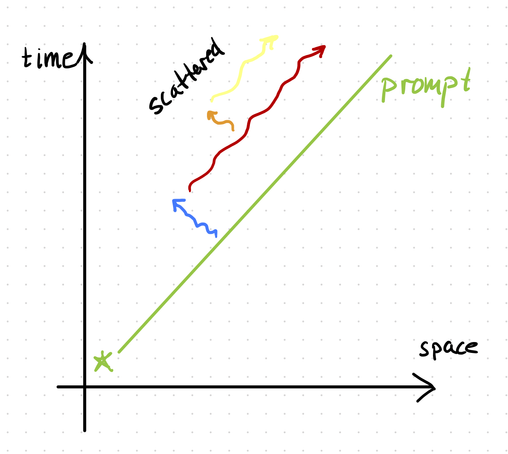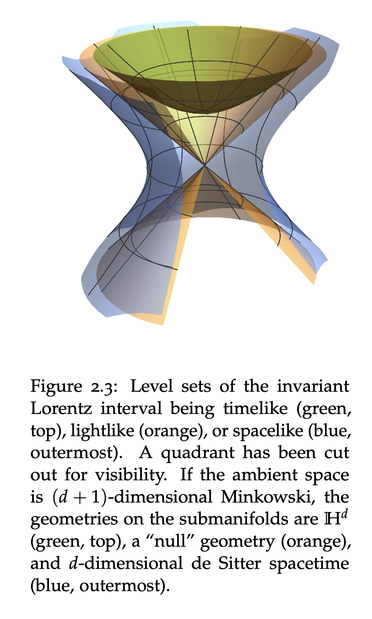Nice: my CV just hit 69 publications
Physics Prof @ U of MS. Sloan Fellow. Black holes, gravitational waves, general relativity & beyond. Formerly Caltech, MIT, Cornell. Need thin pizza + fruity coffee. He/him
@hattom Haha you know my mindset right! Just skipped the ones where people broke the paper build
Bonus: here's an animation I generated showing how the sausage was made. Each frame is one commit from the paper repo.
Something my SXS colleagues and I have been working on for the past six years: https://arxiv.org/abs/2505.13378
The SXS Collaboration's third catalog of binary black hole simulations
Scheel et al.
We have a little news blurb here: https://www.black-holes.org/2025/05/19/catalog-update
Here's a nice figure — read the news blurb for a short explainer, or the paper for more details!
🎉 arXiv submission day! 🎉
🎉 Paper acceptance day! 🎉
I was Leo before this Pope
Making N64 Zelda relativistically correct and calling it Ocarina of Spacetime
Maintaining open-source software that others rely on actually takes time!!!
I learned yesterday that I am a 2025 Kavli Fellow!
https://www.nasonline.org/news/national-academy-of-sciences-selects-the-2025-kavli-fellows/
Wake up babe, new preprint just dropped
Length dependence of waveform mismatch:
a caveat on waveform accuracy
Mitman, Stein, et al.
https://arxiv.org/abs/2502.14025
@dpiponi This kind of parallels how people think that there's something different about elementary functions vs special functions... or a function that is only defined in terms of an infinite series, or something else that they don't count as "closed form." How do you think your computer finds exp(4.3)? Basically the same approach as any special function e.g. Bessel J_5(4.3).
@johncarlosbaez hah! That's why it was in my subconscious... You linked it and mentioned the title in your post!
@johncarlosbaez can you remind me — did we go over the Wallis-style product for the lemniscate constant? I don't know how it would be derived, and why it's similar to the Wallis product for pi, and if there's a similar product for all the generalizations.
Y'all it's a 🎉 New paper day 🎉 for me, and I wrote an explainer over on bluesky... I don't have the energy to copy it over here. Too many platforms! Check out my explainer at https://bsky.app/profile/duetosymmetry.com/post/3ld2p73zkzs2o or just read the paper at https://arxiv.org/abs/2412.06887.
Chemists/biologists/other folks who use preprint servers besides the arXiv: Do you get bibtex entries with the eprint=... field pointing to servers different from the arXiv?
@jsdodge mathematica 🙈
@uep@octodon.social definitely, those points are the same spacetime interval away from the origin as the top green points. I just didn't draw it to keep the figure simpler. The metric on each "half" is the same, d-dimensional hyperbolic space.
Sometimes I make neat figures: (explanation in alt text)
Hello nerds (affectionate). I’m working on a project for school that I’d like to program some RFID chips for. Does anybody have a USB RFID Reader that I might be able to borrow for a couple of weeks? If you're in the Bay Area I can come get it in person. If not, I can pay for shipping to and from me.
